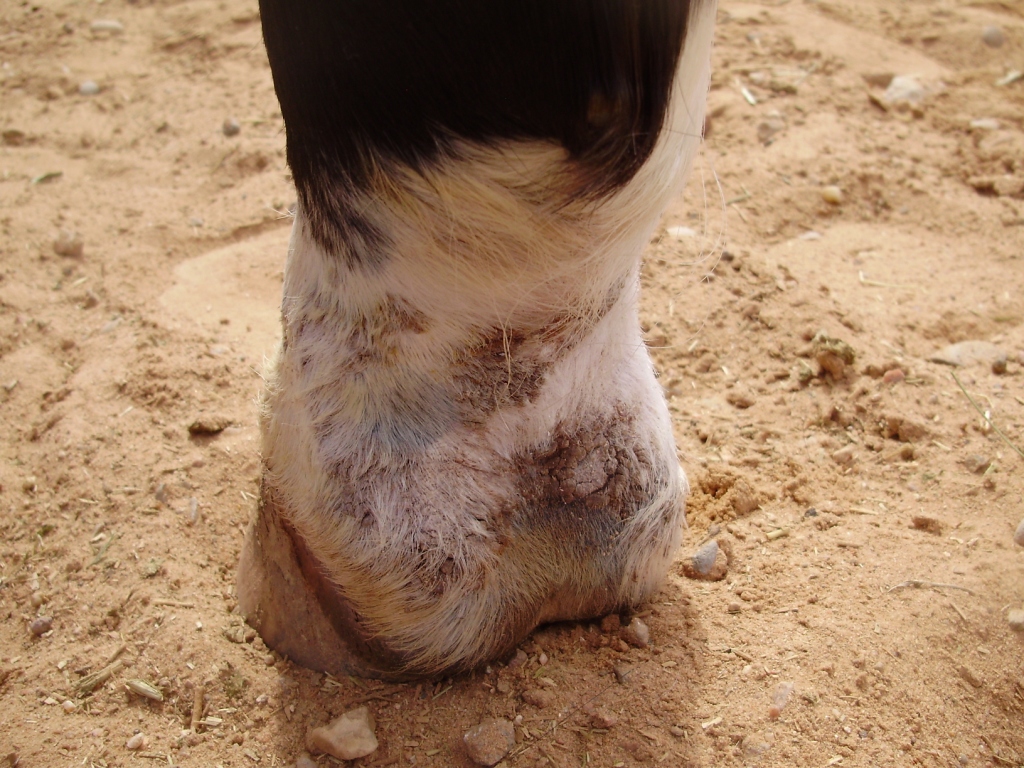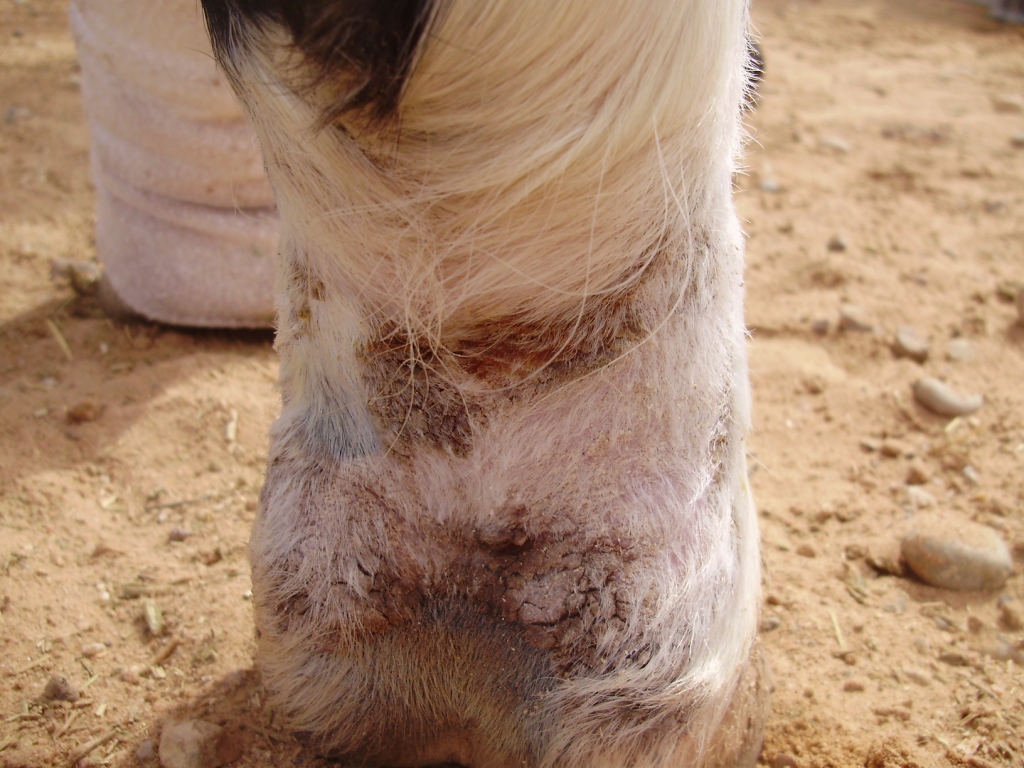
A white-skinned problem
My horse has developed a bad case of scratches, but only on the legs with white hair. She isn’t responding well to betadine shampoos. What is this, and how should I treat it?
A commonly occurring problem with the intensity of the sun in New Mexico is photosensitivity. At first glance, this looks like a severe case of “scratches” or dermatitis in the lower legs, but it only affects white-haired, unpigmented skin. The skin becomes bright red with burning and inflammation, and starts to seep serum, forming a crusty scabby exudate that accumulates on the hair. The skin can peel like a severe sunburn. The leg will swell up and the horse will be very sore, often too sore to allow proper cleaning and care of the leg. If left untreated, the problem only seems to get worse. If treated for only a short time, it will typically come back.
The cause is photosensitization. There are two types. In primary photosensitization (Type I), photoactive substances in certain forage plants interact with sunlight after being ingested by a horse, but only in unpigmented areas of skin. This makes the skin extremely sensitive to sunlight, which can produce severe crusting, itching, or painful dermatitis. The most common culprits are very green alfalfa hay, and pastures with alfalfa or clover (Medicago). Horses can be affected as quickly as 48 to 72 hours after consuming one of these plants and being exposed to sunlight.

A number of different plants are known to have photosensitizing potential, including buckwheat and toxic weeds such as St. John’s Wort, Bishop’s weed, spring parsley, and species of Trifolium, Erodium, Polygonum, and Brassica. Other photosensitizers include some coal tar derivatives, and drugs such as phenothiazine, sulfonamides, and tetracyclines like doxycycline.
In secondary (Type III) photosensitization, horses with liver disease may not be able to break down the pigments in alfalfa or clover. Normally the photosensitizing agent phylloerythrin, formed when chlorophyll is broken down in the gut, would be removed by the liver. If the liver is diseased, phylloerythin accumulates and gets exposed to UV light in unpigmented areas of skin.

In either case, treatment calls for minimizing exposure to the sun by providing shelter or shade. You can also block sun exposure with leg bandages or fly mesh leg wraps. Remove the feed source that contains photoactive pigments, and/or allow grazing only in darkness. In severe cases, antibiotics and/or corticosteroids may be called for, both systemically and topically.
Clip away the hair from any affected areas, debride any dead tissue, and clean with a gentle disinfectant. Apply a topical antibiotic/anti-inflammatory medication and keep the skin wrapped. You can use fly spray or repellent (Fly Strike) to reduce exposure to flies and maggots. With treatment, these skin lesions usually heal well, even after extensive necrosis.
It’s best to prevent the problem in summertime by using fly mesh leg wraps or bandages for white-haired legs, and/or zinc oxide (sunblock) for sensitive skin. Always provide shade during daylight hours and avoid feeding fresh, newly cut, bright green alfalfa. Minimize exposure to pastures with alfalfa or clover or toxic weeds, and put out to pasture at night if possible.
You may wonder how you can distinguish photosensitivity from sunburn, which also occurs in unpigmented areas of skin. Sunburn is most commonly seen on the nose, face, or white areas on the back, where the skin will turn bright red and the skin will later flake and peel, just as on humans. With photosensitivity, there is much more swelling, seeping serum, and exudate, primarily on the legs.
Mark T. Meddleton is owner-manager of Meddleton Equine Hospital in Algodones. Contact him at 867-5567 or drmeddleton@meddletonequine.com.
